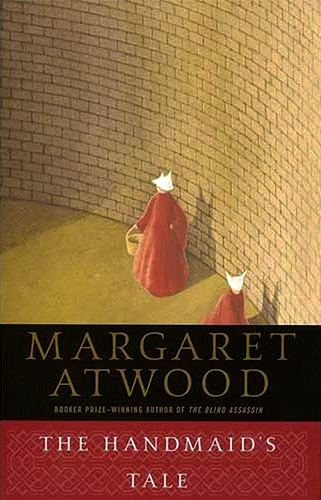TL;DR
In "The Handmaid's Tale," Margaret Atwood explores a dystopian future where women are stripped of their rights and freedoms, focusing on Offred, a Handmaid forced to bear children for elite couples in the oppressive Republic of Gilead.
What is The Handmaid’s Tale about
"The Handmaid's Tale" delves into the life of Offred, a Handmaid in Gilead, a totalitarian regime that has replaced the United States. In this society, women have lost all agency, reduced to their reproductive capabilities due to a catastrophic decline in childbirth rates. Offred's daily life is filled with restrictions; she can only leave the Commander’s household for brief outings and is forbidden from reading or writing. The narrative juxtaposes her present reality against her memories of a past filled with freedoms, love, and family. Through Offred's experiences, Atwood critiques the dangers of authoritarianism, misogyny, and the loss of individual rights, making the story a stark warning about the potential consequences of societal complacency. The novel combines elements of satire and horror to engage readers in a powerful reflection on gender and power dynamics.
The Handmaid’s Tale 6 Key Takeaways
Introduction to Gilead's Society
The novel begins by detailing the oppressive regime of Gilead, where women are stripped of their rights, and Offred, a Handmaid, serves a high-ranking couple.
Offred's Memories
Offred frequently reflects on her past life, recalling her family, job, and the freedoms that have been lost, contrasting them with her current subjugation.
The Ceremony
The story reveals the disturbing 'Ceremony' ritual, where Offred is sexually assaulted while attempting to conceive for the Commander's wife, emphasizing the dehumanization of Handmaids.
Relationships
Amidst her oppression, Offred develops complex relationships with other women and the Commander, highlighting both solidarity and betrayal in a world of survival.
Resistance and Hope
As Offred navigates her bleak existence, she encounters forms of resistance and begins to find ways to reclaim her identity, suggesting that hope is still possible.
The ending and ambiguity
The novel concludes ambiguously, leaving Offred's fate uncertain, which serves to provoke thought about the resilience of the human spirit in the face of tyranny.
Top The Handmaid’s Tale Quotes
- "Nolite te bastardes carborundorum."
- "Better never means better for everyone. It always means worse, for some."
- "Ignoring isn’t the same as ignorance, you have to work at it."
Who should read The Handmaid’s Tale?
"The Handmaid's Tale" is recommended for readers interested in dystopian literature, feminist themes, and social commentary. It challenges readers to confront the implications of totalitarianism and the fragility of personal freedoms, making it a thought-provoking and essential read for those seeking to understand the complexities of power and gender.
The Handmaid’s Tale Best Reviews
- "A chilling dystopian tale that resonates deeply in today's world, Atwood's prose is both poetic and haunting, making "The Handmaid's Tale" a must-read for its powerful themes of oppression and resistance." - The New York Times
- "Margaret Atwood's sharp wit and dark humor elevate this cautionary tale, forcing readers to confront uncomfortable truths about society and gender roles." - The Guardian
People also liked these summaries
The Handmaid’s Tale FAQs
What themes are explored in The Handmaid's Tale?
The Handmaid's Tale explores themes of totalitarianism, gender oppression, identity, and the impact of memory, highlighting how power dynamics can shape society and individual lives.
Is The Handmaid's Tale suitable for young readers?
While younger readers can appreciate its themes, The Handmaid's Tale contains dark and mature content, and it may not be suitable for very sensitive individuals, often recommended for readers aged 14 and up.
How does The Handmaid's Tale relate to current events?
Atwood's novel resonates with current discussions about women's rights, autonomy, and the threats of authoritarianism, serving as a cautionary tale about the potential regression of social liberties.
